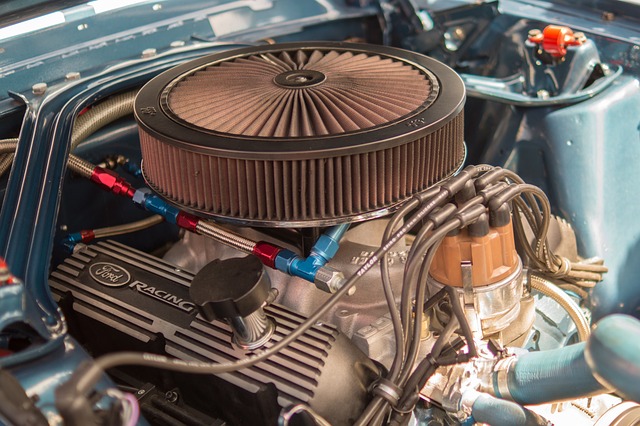Understanding common ice maker issues is vital for efficient refrigerator repair and maintenance. Leaks, low output, non-dispensing, and power problems have straightforward solutions, such as replacing seals or water valves, cleaning filters, and addressing motor malfunctions. Regular maintenance, including tool cleaning and proper drainage, prevents complex repairs. Installing a new ice maker involves preparing tools, removing the old one, connecting water lines, testing for leaks, securing the new unit, plugging in, and resetting. Annual professional Refrigerator Repair services ensure optimal performance by preventing reduced water flow, energy loss, and electrical hazards.
Ice makers are essential for convenience and hospitality. However, they can develop issues or require periodic replacement. Understanding your ice maker’s functionality and common problems is key to effective troubleshooting. This guide delves into both repairing and installing new models, offering a step-by-step approach. Learn how to maintain optimal performance to avoid frequent refrigerator repair visits. By following these tips, you’ll ensure consistent ice production for years to come.
- Understanding Your Ice Maker: Common Issues and Their Solutions
- Step-by-Step Guide: Installing a New Ice Maker
- Maintenance Tips to Keep Your Ice Maker Running Efficiently
Understanding Your Ice Maker: Common Issues and Their Solutions
Understanding your ice maker is key to efficient refrigerator repair and maintenance. Common issues include water leakages, poor ice production, or a failure to dispense ice. Leaks often stem from damaged door seals or faulty water valves, easily fixed by replacing these parts. Low ice output can be caused by a frozen evaporator coil, dirty filters, or a malfunctioning ice maker motor—regular cleaning and part replacement are solutions here. If your ice maker isn’t dispensing, check for power issues or a blocked dispensing chute. Simple troubleshooting techniques can often resolve these problems without the need for professional refrigerator repair services.
Ice makers, while convenient, require occasional attention to keep them functioning optimally. Regular maintenance involves cleaning the inner components and ensuring proper water flow. By staying proactive, you can prevent more complex issues that might lead to costly repairs.
Step-by-Step Guide: Installing a New Ice Maker
Installing a new ice maker is a straightforward process that can significantly enhance your convenience, especially if you’re dealing with an old or damaged model. Here’s a step-by-step guide to help you navigate this task:
1. Prepare for Installation: Before starting, ensure your refrigerator is unplugged from the power source. Gather all necessary tools, including the new ice maker, water lines, and any hardware provided. Familiarize yourself with your refrigerator’s internal layout to make the installation process smoother.
2. Remove the Old Ice Maker: Carefully take out the old ice maker by detaching any water lines connected to it. Some models might require unscrewing a few bolts holding it in place. Once removed, clean the area to ensure there’s no debris or old residue. Check for any damage to the refrigerator’s interior and make repairs if needed.
3. Connect Water Lines: Attach one end of the new water lines to the ice maker and secure them tightly. Then, connect the other ends to your home’s water supply, ensuring proper fittings. Test the connections for leaks by turning on the water supply temporarily.
4. Position and Secure the Ice Maker: Place the new ice maker in its designated spot, aligning it with the mounting holes. Use screws or bolts provided to secure it firmly, following the manufacturer’s instructions.
5. Reset and Test: After ensuring all connections are secure, plug your refrigerator back into the power source and turn it on. Wait for a few minutes for the ice maker to reset and start functioning. Check for any leaks and ensure water is flowing through the lines properly.
Maintenance Tips to Keep Your Ice Maker Running Efficiently
To ensure your ice maker continues to operate efficiently, regular maintenance is key. Start by checking and cleaning the water filter regularly, as a dirty or clogged filter can reduce water flow and impact ice production. Additionally, keep an eye on the ice maker’s door seal; any damage or wear can lead to energy loss and reduced performance. Regularly inspecting these components will help prevent issues before they arise.
Another important aspect is to ensure proper drainage. Ice makers accumulate condensation, so unblocking drainage holes and keeping the area around it dry prevents excess moisture buildup, which could cause freezing or electrical hazards. Lastly, consider scheduling professional refrigerator repair services for a thorough inspection and tune-up every year to maintain optimal performance.
Whether you’re dealing with a malfunctioning ice maker or considering a new installation, understanding the basics of repair and maintenance is key. By familiarizing yourself with common issues and following simple step-by-step guides, you can efficiently tackle problems and even install a new ice maker with ease. Regular maintenance will ensure your ice maker runs smoothly, providing cold, crisp cubes for years to come. Remember, a well-maintained ice maker means fewer headaches and more refreshing drinks!
